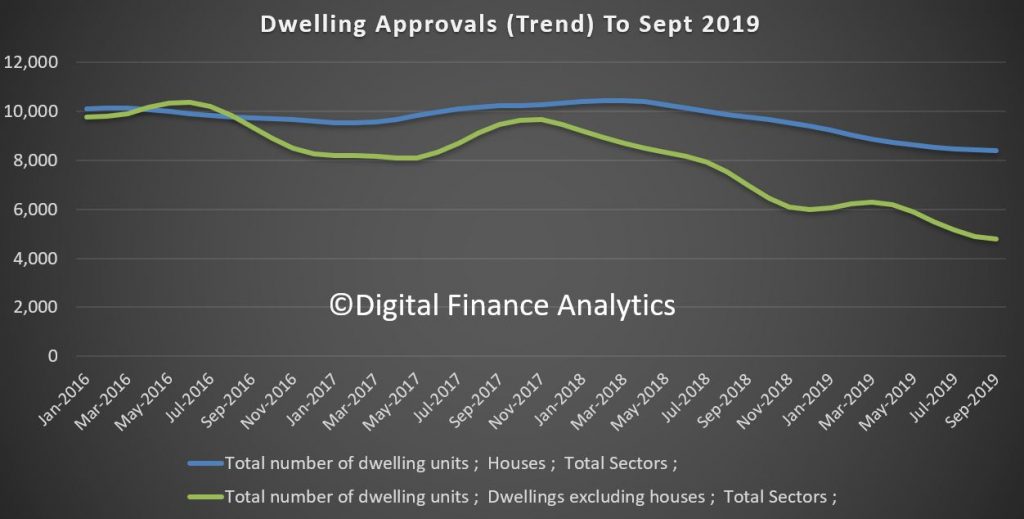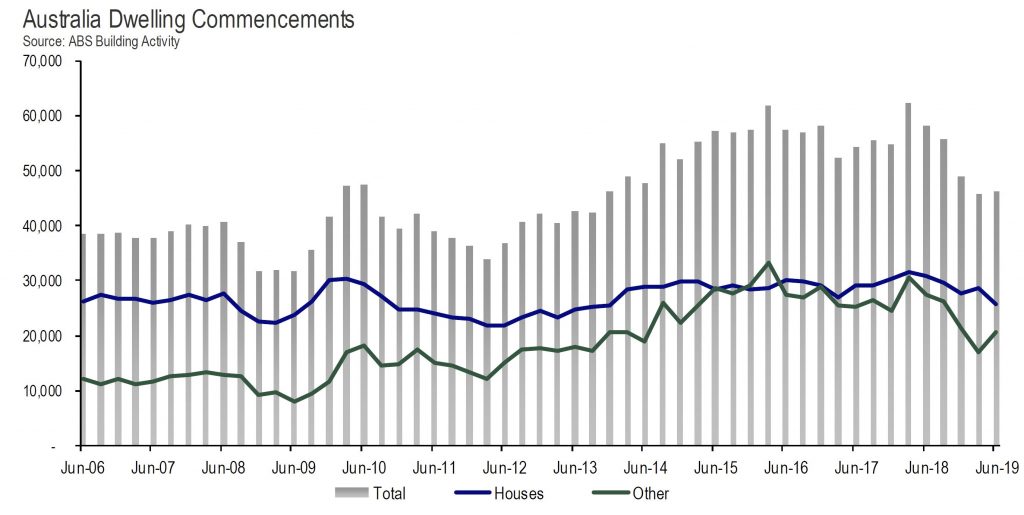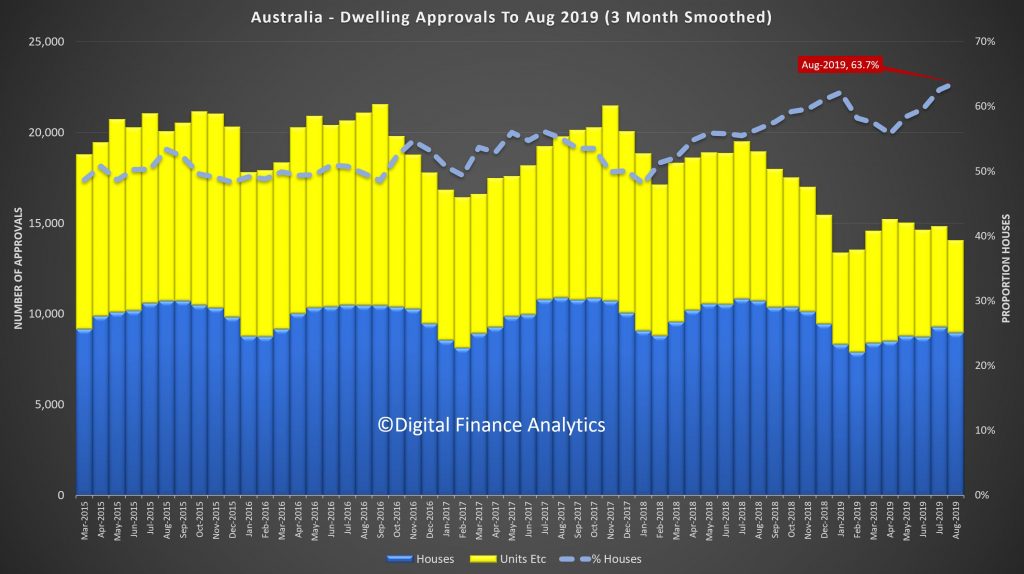Data from the ABS today shows that the number of dwellings approved fell 0.8 per cent in October 2019, in trend terms, and has fallen for 23 months. Private dwellings excluding houses also fell, by 0.5 per cent.
The seasonally adjusted estimate for total dwellings approved fell 8.1 per cent in October, driven by a 11.3 per cent decrease in private dwellings excluding houses. Private sector houses fell 7.0 per cent.
The value of total building approved fell 0.7 per cent in October, in trend terms, and has fallen for two months. The value of residential building fell 1.2 per cent, while non-residential building fell 0.2 per cent.
Number of total dwelling units
The trend estimate for Australia fell 0.8% in October.
Number of private sector houses
The trend estimate for private sector houses approved fell 0.9% in October.
Number of private sector dwellings excluding houses
The trend estimate for private sector dwelling units excluding houses fell 0.5% in October.
Value of new residential building
The trend estimate for the value of new residential building approved fell 1.3% in October and has fallen for eight months.
Value of alterations and additions to residential building
The trend estimate for the value of alterations and additions to residential building fell 0.1% in October and has fallen for seven months.
Value of non-residential building
The trend estimate for the value of non-residential building approved fell 0.2% in October after rising for 14 months.
Across the states and territories, dwelling approvals fell in the Northern Territory (11.1 per cent), New South Wales (4.6 per cent), Queensland (1.4 per cent), and Western Australia (1.0 per cent). Tasmania (4.5 per cent), South Australia (3.1 per cent), Australian Capital Territory (3.1 per cent), and Victoria (1.3 per cent) recorded increases, in trend terms.
Approvals for private sector houses fell in New South Wales (2.3 per cent), Victoria (1.7 per cent), Western Australia (0.2 per cent), and Queensland (0.1 per cent). South Australia rose 2.0 per cent, in trend terms.
New South Wales
The trend estimate for total number of dwelling units approved in New South Wales fell 4.6% in October. The trend estimate for the number of private sector houses fell 2.3% in October.
Victoria
The trend estimate for total number of dwelling units approved in Victoria rose 1.3% in October. The trend estimate for the number of private sector houses fell 1.7% in October.
Queensland
The trend estimate for total number of dwelling units approved in Queensland fell 1.4% in October. The trend estimate for the number of private sector houses fell 0.1% in October.
South Australia
The trend estimate for total number of dwelling units approved in South Australia rose 3.1% in October. The trend estimate for the number of private sector houses rose 2.0% in October.
Western Australia
The trend estimate for total number of dwelling units approved in
Western Australia fell 1.0% in October. The trend estimate for the
number of private sector houses fell 0.2% in October.




